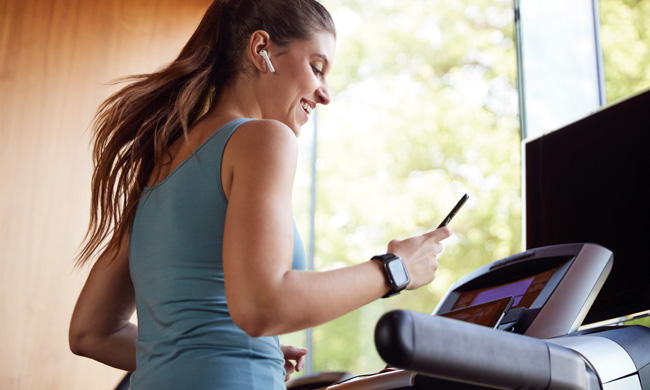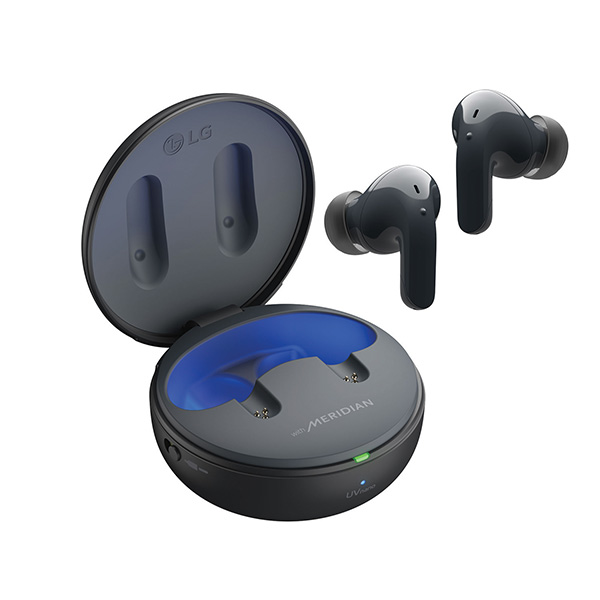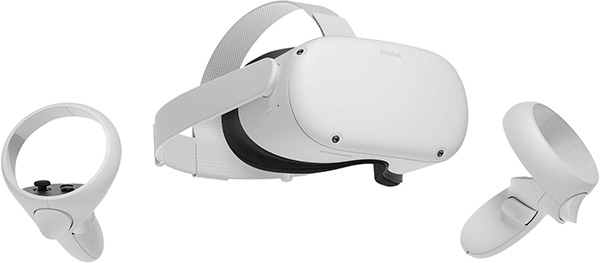fitness
Scaling Back: 5 ways to manage your weight
For many people who wish to work toward a healthier weight, one of the greatest obstacles is figuring out where to begin.
Last Updated on May 19, 2025 by Rod Washington
(Family Features) For many people who wish to work toward a healthier weight, one of the greatest obstacles is figuring out where to begin.
These tips from SlimFast consultant and registered dietitian Maryann Walsh show it doesn’t take a drastic lifestyle overhaul to make an impact.
Eat Mindfully
Many people who struggle with their weight benefit from being more conscious about what they’re eating and why. For example, consider your eating habits, such as eating even when you’re not hungry whether that’s because it’s mealtime and you think you should eat, you’re satisfying a craving or using a tasty snack to cope with stress.
Recognizing why you’re eating is an important step toward correcting destructive eating patterns, but so is paying attention to the other details of the eating experience, including what you eat and how it makes you feel. Ultimately, this may allow you to choose healthier foods that nourish your body for the long-term, rather than the brief satisfaction that comes with less nutritious choices.
Consider Intermittent Fasting
One weight-loss method many people find success using is intermittent fasting, which involves abstaining from all food and beverages for a specified time period each day or week. While going too long without food can sometimes lead to excess hunger then overeating later, in shorter, controlled fasting timeframes one can often more easily achieve a caloric deficit, which is required for weight loss.
Prepare for your fasting phase by choosing foods that support satiety. Options like SlimFast’s Intermittent Fasting line of meal bars and protein shakes can help avoid a sense of deprivation with tasty flavors like the Vanilla Cupcake Snack Shake Mix and Vanilla Almond Crunch Complete Meal Bar. The shake mixes deliver 15 grams of slow-digesting protein, compared to whey protein, to help curb hunger, along with more than 20 vitamins and minerals. The meal bars clock in with 15 grams of protein and 10 grams of fiber.
Manage Stress
When you’re stressed, your body produces cortisol, which also raises insulin and can drive hunger and trigger cravings for comfort foods. In fact, that’s the very reason people tend to overeat when they’re under pressure. Light exercise and meditative practices can help you manage your mental strain. You might also consider talk therapy with a friend or professional or spend time unwinding with a book or music.
Get Proper Sleep
Poor sleep habits affect your weight in numerous ways. One is that when you’re feeling tired, your hunger and satiety hormones, ghrelin and leptin, can be affected, leading to an increase in caloric intake and subsequent weight gain. Additionally, when you’re tired, you’re more likely to take shortcuts like skipping workouts or opting for unhealthy convenience foods. All are reasons to make better rest a bigger priority.
Track Eating and Exercise
When you’re not paying attention to what you eat and how you move, you may not even realize how your habits are affecting your health. Logging what you eat, especially if you use a tool like an app that helps you see the nutrition breakdown, may give you a clearer idea of the quality and quantity of your intake. Similarly, when you’re specifically writing down the time you’re committing to physical activity, you’ll find it easier to identify patterns and pinpoint where you can make adjustments to increase your exercise.
Visit SlimFast.com to find more resources on weight management and intermittent fasting.
3 Tips for Intermittent Fasting
If you’re new to the idea of intermittent fasting, these tips can help you find greater success so you can see results.
- Pace yourself. Make a gradual transition so your body gets used to going without food for shorter periods of time before you work up to extended fasting periods.
- Stay hydrated. Avoid confusing thirst for hunger by upping your fluid intake. Staying hydrated and energized while you fast helps keep fatigue and brain fog at bay. Options like fruit-flavored SlimFast Intermittent Fasting Energizing Hydration Supplement Drink Mix won’t break your fast and can help you add variety as a flavorful alternative to water. They can provide the energy and focus you need between meals and are perfect for those who feel groggy or run-down while fasting.
- Set goals. Know what you want to achieve and why, so your “why” can keep motivating you to follow your intermittent fasting plan even when you’re tempted to quit.
Photo courtesy of Getty Images (woman and man exercising)
SOURCE:
SlimFast
Discover more from Daily News
Subscribe to get the latest posts sent to your email.
health and wellness
Control ‘Bad’ Cholesterol
Last Updated on September 29, 2025 by Daily News Staff

Control ‘Bad’ Cholesterol
(Family Features) Getting your cholesterol checked, and talking with your doctor about steps to control high cholesterol, could save your life. If you, or someone you love, have experienced a heart attack or stroke, you know how life-changing those moments can be. What many don’t realize is high LDL (low-density lipoprotein) cholesterol often plays a silent role behind the scenes. Taking control of cholesterol numbers starts by knowing your LDL number and working with your doctor to put together an appropriate treatment plan. Your body produces all the cholesterol it needs to stay healthy. Cholesterol helps make new cells, some hormones and substances that aid in food digestion. However, having too much cholesterol can contribute to serious health risks. Knowing more about cholesterol and its role in your body and overall health can help you protect yourself from potential life-threatening conditions like heart attack or stroke – even if you’ve already had one. Learn more with this information from the American Heart Association’s “Lower Your LDL Cholesterol Now” initiative, nationally sponsored by Amgen, so you can take control of your heart health. Know Your Numbers Keeping tabs on your cholesterol is an important step toward managing potentially serious risks to your heart, brain and overall health. LDL cholesterol, also known as “bad” cholesterol, can cause fatty buildup called plaque in your arteries. Nearly 1 in 3 adults in the U.S. has high LDL (bad) cholesterol, but many don’t know until it’s too late. Having too much LDL (bad) cholesterol can silently increase your risk for heart attack and stroke when it goes unchecked, but you have the power to change that. “A lot of people don’t realize they have high LDL (bad) cholesterol because it doesn’t have symptoms,” said Dr. Amit Khera, American Heart Association national volunteer expert and cardiologist. “That’s why I always encourage my patients to get their cholesterol checked and have honest conversations with their doctors. Knowing your LDL number is one of the most important things you can do to protect your heart.” Studies show an LDL at or below 100 milligrams per deciliter (mg/dL) is ideal for most adults. If you have a history of heart attack or stroke and are already on a cholesterol-lowering medication, your doctor may aim for your LDL to be 70 mg/dL or lower. Get Tested Don’t wait; schedule a cholesterol test as soon as possible. High cholesterol often has no symptoms, so it’s important to get your cholesterol checked even if you feel fine. In fact, the American Heart Association recommends all adults 20 and older have their LDL (bad) cholesterol checked every 4-6 years as long as risk remains low. If you have had a heart attack or stroke, talk to your doctor about the right frequency of testing. A blood test to measure your cholesterol numbers, called a “fasting” or “non-fasting lipid profile or panel,” assesses several types of fat in the blood. The test gives four results: total cholesterol, LDL (bad) cholesterol, HDL (good) cholesterol and triglycerides (blood fats). Talk to Your Doctor Your doctor is there to help you reach your health goals, including keeping your LDL (bad) cholesterol at a healthy number. Making decisions together is the best way to create a treatment plan you’ll be more likely to stick to. If you don’t understand something, ask for further clarification. Discuss your risk factors, including your personal and family medical history. Having a candid conversation about your lifestyle can also help pinpoint potential risk factors and areas you can work to reduce your risk and improve your health. If your LDL cholesterol number is high, your doctor may recommend treatment options. Together, you can review the benefits, risks and side effects to decide on the treatment plan that works best for you. Take Action Early The sooner you manage high LDL (bad) cholesterol, the more you can reduce your risk of heart attack and stroke. Proactively monitoring and taking steps to slow or reverse your numbers can halt or delay buildup in your arteries. In addition, treatment options can be more effective when a high LDL number is detected early. Learn more about the steps you can take to combat high LDL (bad) cholesterol at heart.org/LDL
Living with High LDL (Bad) Cholesterol
If your LDL (bad) cholesterol is elevated, lifestyle changes can help lower your overall risk of heart disease, but may not be enough to counteract individual risk factors such as genetics and family history. Check your LDL (bad) cholesterol number then talk to your doctor about next steps, including these changes to take back control of heart health. Eat a Heart-Healthy Diet From a dietary standpoint, the best way to lower your cholesterol is to follow a balanced diet, which is low in saturated fats, trans fats and cholesterol. Following a heart-healthy diet means limiting your intake of fatty meats and dairy products made with whole milk. Choose lean cuts of meat and skim, low-fat or fat-free dairy products instead. It also means limiting fried foods and cooking with healthy oils, such as liquid vegetable oils instead of butter or coconut oil, which are high in saturated fat and cholesterol. Be More Physically Active A sedentary lifestyle lowers HDL (good) cholesterol. Less HDL means there’s less good cholesterol to remove bad cholesterol from your arteries. At least 150 minutes of moderate-intensity aerobic exercise a week is enough to lower both cholesterol and high blood pressure. Brisk walking, swimming, bicycling or even vigorous yard work can fit the bill. In addition, the American Heart Association recommends adding moderate- to high-intensity muscle-strengthening activity – such as resistance training or weightlifting – at least two days each week. Quit Smoking When a person with unhealthy cholesterol numbers also smokes or vapes, the risk of heart disease increases even more. Smoking also compounds other risk factors for heart disease, such as high blood pressure and diabetes. By quitting, smokers can lower their triglycerides and increase their HDL cholesterol numbers. Quitting can also help reduce damage and improve how the arteries function. Lose Weight Living with excess weight or obesity tends to raise the chances of increasing LDL (bad) cholesterol and lowering good cholesterol. Weight loss of even 5-10% may help improve some cholesterol numbers and other heart disease risk factors. Photo courtesy of Shutterstock (patient with doctor)Discover more from Daily News
Subscribe to get the latest posts sent to your email.
Health
6 Simple Tricks to Start Each Day Strong
For many people, easy, breezy mornings may sound like a fantasy.
Last Updated on August 29, 2025 by Daily News Staff
(Family Features) Pressing snooze, finally waking up frazzled, rushing through the house to leave on time, skipping breakfast – if that sounds like a typical morning for you, creating a new routine to start days on a stronger note may help you feel more refreshed and accomplished.
For many people, easy, breezy mornings may sound like a fantasy. However, instituting these simple tips from the experts at Buddha Teas – creators of fresh, organic teas with high-quality ingredients to let you explore nature’s best qualities – can put you on a fast track toward less frantic beginnings to each day.
Begin a Bedtime Routine
A bright-eyed, bushy-tailed morning actually starts the night before. To help ensure you’re getting enough sleep each night (7 hours or more for adults, according to the National Institutes of Health), make sure you’re winding down both physically and mentally before heading to bed. This often means skipping caffeine, turning off devices and avoiding big meals close to bedtime.
Wake Up at the Same Time Each Day
As part of your fixed bedtime routine, try going to sleep and waking up at the same times each day – including weekends. This may help your body create a natural rhythm to make it easier for you to rise in the morning without pressing snooze.
Start with Something You Enjoy Whether you’re a morning person or natural night owl, knowing you’ll start the day with something enjoyable can help you dread that ringing alarm clock a little less. For example, a steaming mug of Buddha Teas Turmeric Ginger blend offers a delicious and comforting way to wake up. Turmeric’s pungent flavor combined with delightfully sweet ginger warms with every sip to energize your morning.
Whether you’re a morning person or natural night owl, knowing you’ll start the day with something enjoyable can help you dread that ringing alarm clock a little less. For example, a steaming mug of Buddha Teas Turmeric Ginger blend offers a delicious and comforting way to wake up. Turmeric’s pungent flavor combined with delightfully sweet ginger warms with every sip to energize your morning.
Meditate and Move
While a meditation session may sound like a quicker way to put you back in bed than get your day going, it can actually be beneficial to harness positive energy first thing. Focus on deep breathing, calm your mind and slow your heart rate prior to taking on the day’s tasks. Once you’re mentally motivated, move on to physical preparation with 10-15 minutes of light stretching to energize your body and get your blood flowing.
Strengthen Your Body
Another key aspect to a successful morning includes strengthening yourself physically by eating and drinking foods and beverages that provide immunity-boosting ingredients. Consuming a powerful blend of healing, protecting and preventative herbs can be a productive way to defend your body from free radicals with a beverage like Buddha Teas Echinacea Elderberry, which is packed with organic and plant-based vitamin C, antioxidants and detoxifying herbs. Echinacea, used for centuries to heal and protect, is combined with elderberry’s high levels of vitamin C, which is essential for growth, development and reparation of the body.
Eat a Nutritious Breakfast
Everyone knows the common refrain: “Breakfast is the most important meal of the day.” Yet, many people choose to skip a morning meal or simply run out of time, despite the many benefits of refueling before heading off to work or school. In fact, a nutritious breakfast offers a multitude of health benefits for your body, according to the International Food Information Council Foundation, including a healthier heart, better digestion, stronger bones and improved metabolism. Plus, making time to eat in the morning can provide the energy you need to tackle your to-do list.
Find more beneficial ways to start your days strong by visiting BuddhaTeas.com.
Photos courtesy of Getty Images
SOURCE:
Buddha Teas
Discover more from Daily News
Subscribe to get the latest posts sent to your email.
fitness
Get Fit: Tackle goals with fitness-friendly tech gadgets
Committing to getting fit and actually doing it aren’t always one and the same but relying on tech devices can be an effective way to tackle your fitness goals.
Last Updated on May 18, 2025 by Rod Washington
(Family Features) Committing to getting fit and actually doing it aren’t always one and the same but relying on tech devices can be an effective way to tackle your fitness goals.
From watches and phones to earbuds and virtual reality headsets, technology can make it easier to track your progress and create a more enjoyable workout experience. See how some of the latest technology is fueling new devices ideal for amping up your workouts this winter with these trendy ideas.
Find more inspiration to energize your fitness regimen at Qualcomm.com.
Wellness You Can Watch
Powered by the Snapdragon 4100+ Wear Platform, the Fossil 6 Wellness Edition watch provides the speed, power and performance you need to efficiently track your health, all with extended battery life, Bluetooth 5.0 LE connectivity, rapid charging and more features to elevate your experience. The watch detects movement and starts a workout for you. In addition, not only does it allow you to monitor how hard your heart is working and provide estimated blood oxygen measurements so you can see how well your body is circulating oxygen, but it also measures your cardiorespiratory fitness, allowing you to track the amount of oxygen your body utilizes during exercise. In addition to keeping tabs on your active hours, the watch also helps you understand more about your sleep habits, including sleep quality and history, restfulness and progress against sleep goals.
A Smart Workout Buddy
If he’s like most golfers, chances are your dad spends a few minutes each round searching for his ball after a wayward tee shot. Save him some precious time on the course with the extra golf balls he needs so he doesn’t have to worry about leaving one (or two or three) in the woods. Even amateur players sometimes prefer a certain ball, so don’t be afraid to sneak to the garage and check his current supply so you can put his favorite brand in your cart.
Sound to Motivate More Movement
An energizing workout requires a soundtrack to get you pumped up and moving. Enhance your listening experience with LG Tone Free T90 wireless earbuds, which feature Dolby Head Tracking and Snapdragon Sound. These earbuds identify the location of sound as you turn your head, recalibrating to enable a more natural sound experience so you’re always in the center of the scene. The speaker driver is made of a strong, lightweight material that delivers better overall audio clarity and reduced vibration so you can hear every sound come alive. Exceptional audio combines with superior connectivity for music, movies, crystal-clear voice calls, gaming and a low latency fit for aptX Adaptive compatible devices.
Play Your Way to Fitness
If your workout regimen needs an infusion of playful fun, the Meta Quest 2 virtual reality headset may be just the ticket. This VR headset is your ticket to the metaverse (and so much more), whether you’re working out, gaming, meeting up with friends or going on a virtual field trip. Industry-leading graphics and immersive audio put you in the middle of the action. The portable device is ideal for workouts on the go, and you’ll find a wide range of apps that let you work out amid stunning scenery, compete against friends and participate in challenges. The immersive experiences break up the monotony of a boring, basic workout, making exercise fun and playful.
Music to Power Your Workout
Enjoy stereo-quality sound wherever your workout takes you with a state-of-the-art smartphone like the Motorola Edge+ Gen 2, powered by the Snapdragon 8 Gen 1 Mobile Platform. Giving you up to two full days of power, lightning-fast speeds and pro-quality features for doing more of what you love, this smartphone can provide music that motivates you regardless of your exercise style. When it’s time to rest and recover, you can enjoy days of entertainment on a beautiful display that wraps around the edges.
Track Your Progress
Setting fitness goals starts with a plan and achieving them requires strong work ethic and, just as importantly, the ability to track progress so you can enjoy the success. The ultimate expression of ultra-portability and versatility, the Lenovo IdeaPad Duet 5 Chromebook is powered by the Snapdragon 7c Gen 2 Compute Platform. Slim and sleek, this 2-in-1 features a detachable keyboard to transform from a tablet to a laptop so you can keep an eye on your fitness goals whether you’re working out at home or on the go, and 15 hours of battery life means you can enjoy usage from day to night.
Photo courtesy of Getty Images (woman on treadmill)
SOURCE:
Qualcomm
Discover more from Daily News
Subscribe to get the latest posts sent to your email.
